This article was co-authored by Lyssandra Guerra. Lyssandra Guerra is a Certified Nutrition & Wellness Consultant and the Founder of Native Palms Nutrition based in Oakland, California. She has over five years of nutrition coaching experience and specializes in providing support to overcome digestive issues, food sensitivities, sugar cravings, and other related dilemmas. She received her holistic nutrition certification from the Bauman College: Holistic Nutrition and Culinary Arts in 2014.
There are 18 references cited in this article, which can be found at the bottom of the page.
wikiHow marks an article as reader-approved once it receives enough positive feedback. This article received 37 testimonials and 100% of readers who voted found it helpful, earning it our reader-approved status.
This article has been viewed 1,326,755 times.
How comfortable do you feel consuming GMOs? While the Food and Drug Administration has approved the use of genetically modified organisms (GMOs) and regulates their use, you might not want to consume genetically modified food for a variety of reasons. If you live in Europe, avoiding GM foods is easier, since laws require labeling. In the U.S. and Canada, however, food manufacturers are not required to label their food as genetically modified or not. To help you avoid GMOs, we've put together a guide so you can shop for food that you feel good about eating.
Steps
Shopping for Food
-
1Buy food labeled 100% organic. The U.S. and Canadian governments do not allow manufacturers to label something 100% organic if that food has been genetically modified or been fed genetically modified feed.[1] You may find that organic food is more expensive and different in appearance from conventional products.
- Trusted Organic Certification institutions include the United States Department of Agriculture[2] (USDA), Quality Assurance International[3] (QAI), Oregon Tilth[4] , and California Certified Organic Farmers[5] (CCOF). Look for their mark of approval on the label of the product.
- Also, just because something says "organic," it does not mean that it doesn't contain GMOs. In fact, it can still contain up to 30% GMOs, so be sure the label says 100% organic. Eggs labeled "free-range," "natural," or "cage-free" are not necessarily GMO free; look for eggs that are 100% organic.
-
2Recognize fruit and vegetable label numbers. Price lookup (PLU) codes can be found on the stickers that are on your produce. These codes can be used to identify foods have been genetically engineered or modified.[6]
- If it is a 4-digit number, the food is conventionally produced. This food may or may not be genetically modified.
- If it is a 5-digit number beginning with an 8, it is GM. However, do not trust that GE foods will have a PLU identifying it as such, because PLU labeling is optional.
- If it is a 5-digit number beginning with a 9, it is organic and is not genetically modified[7]
Advertisement -
3Buy 100% grass-fed meat. Most cattle in the U.S. are grass-fed but spend the last portion of their lives in feedlots in which they may be given GM corn, the purpose of which is to increase intramuscular fat and marbling. If you're looking to stay away from GMOs, make sure the cattle were 100% grass-fed or pasture-fed (sometimes referred to as grass-finished or pasture-finished).[8]
- Some meats like pork and chicken cannot be 100% grassfed. In those instances, look for meat that is labeled 100% certified organic.[9]
- You should also buy wild caught fish instead of farm raised fish. Farm raised fish are fed with genetically modified grains.
-
4Seek products that are specifically labeled as non-GMO or GMO-free. It was once rare to find products labeled as such, but thanks to organizations such as the Non-GMO Project,[10] they are becoming more common. You can also research websites that list companies and foods that do not use genetically modified foods, but be aware that some information is often incomplete, and conflicting interests may not be declared.
-
5Shop locally. Although more than half of all GM foods are produced in the U.S.,[11] most of it comes from large industrial farms. By shopping at farmers' markets, signing up for a subscription from a local Community Supported Agriculture (CSA) farm, or patronizing a local co-op, you may be able to avoid GM products and possibly save money at the same time.
- Shopping locally may also give you the opportunity to speak to the farmer and find out how he or she feels about GMOs and whether or not they use them in their own operation.
- Buying local food does not guarantee that you will be avoiding GMOs. Many local farmers use genetically modified seeds.[12]
-
6Buy whole foods. Favor foods that you can cook and prepare yourself, rather than foods that are processed or prepared (e.g., anything that comes in a box or a bag, including fast food). What you lose in convenience, you may recover in money saved and satisfaction gained, as well as increased peace of mind. Try cooking a meal from scratch once or twice a week; you may enjoy it and decide to do it more often.[13]
-
7
Identifying Foods Most Likely to Contain GMOs
-
1Become familiar with high-risk crops. These are the products that are most likely to be genetically modified. Crops that are genetically modified include soy, corn, canola, sugar beets, cotton, Hawaiian papaya, zucchini and yellow summer squash, and alfalfa.[16] [17]
- Soy is not limited to actual soybeans. See How to Live With a Soy Allergy for more information on avoiding soy products. Make sure that your soy milk, edamame, and tofu have a 100% certified organic label.
- Corn includes corn flour, meal, oil, starch, gluten, and syrup.[18]
- Canola oil is also known as Rapeseed oil. This ingredient can be found in a lot of processed foods. If you usually use Canola oil for cooking, try using olive oil instead.
- Sugar beets are found in any sugar that is not 100% cane sugar. Make sure you read the label.
- Cottonseed oil is a common ingredient in vegetable oil. shortening, and margarine.[19]
- Many dairy products contain GMOs. Some farmers inject their cows with a genetically modified hormones rBGH/rBST and/or are fed genetically modified grains. You should look for dairy products that say rBGH or rBST free.[20]
- Hawaiian papayas are genetically modified. You should buy papayas grown in other regions like the Caribbean.[21]
- We usually do not directly ingest alfalfa. Alfalfa is grown to feed dairy cows and other animals. Both organic alfalfa and genetically engineered alfalfa are grown. You can avoid genetically engineered alfalfa by eating grass fed meat and dairy products that are 100% certified organic.[22]
-
2Be aware of ingredients derived from GMO crops. Not only are the actual crops genetically modified, but an ingredient that is derived from the crop is genetically modified as well. If you are buying processed foods, you should read the food label and avoid any of these ingredients: amino acids (synthetic form, not naturally occurring in protein), aspartame, ascorbic acid (synthetic vitamin c), sodium ascorbate, citric acid, sodium citrate, ethanol, natural and artificial flavorings,high fructose corn syrup, hydrolyzed vegetable protein, lactic acid, maltodextrins, molasses, monosodium glutamate, sucrose, textured vegetable protein, xantham gum, vitamins, and yeast products.[23]
- About 75% of processed foods at the grocery store contain these ingredients.[24] This includes foods like soda, cookies, bread, and chips. You can avoid these derivatives by cooking your food from scratch and carefully buying your food.
-
3Use a shopping guide. There is no way for you to know every food that contains GMOs. If you are unsure, you should consult a GMO food guide. The Center for Food Safety has created an iPhone and Android app that can help you avoid GMOs when you are shopping. You can also download[25] or use their online guide.[26]
-
4Be careful when you eat at a restaurant. If you eat out, you should ask the manager or your waitress if they use organic ingredients or if they use GMO ingredients. If they do not use organic foods, you should avoid tofu, edamame, corn tortillas, corn chips, and any other products that contain corn or soy. Most of the items containing sugar will contain GMO derivatives.[27]
- You should also ask what type of oil is used for cooking. If they say vegetable oil, margarine, cottonseed oil, or corn oil, ask if they can cook your food with olive oil instead.
GMO Crops to Avoid and Non-GMO Labels to Look For
Expert Q&A
Did you know you can get expert answers for this article?
Unlock expert answers by supporting wikiHow
-
QuestionHow do I know if my food is genetically modified?
 Lyssandra GuerraLyssandra Guerra is a Certified Nutrition & Wellness Consultant and the Founder of Native Palms Nutrition based in Oakland, California. She has over five years of nutrition coaching experience and specializes in providing support to overcome digestive issues, food sensitivities, sugar cravings, and other related dilemmas. She received her holistic nutrition certification from the Bauman College: Holistic Nutrition and Culinary Arts in 2014.
Lyssandra GuerraLyssandra Guerra is a Certified Nutrition & Wellness Consultant and the Founder of Native Palms Nutrition based in Oakland, California. She has over five years of nutrition coaching experience and specializes in providing support to overcome digestive issues, food sensitivities, sugar cravings, and other related dilemmas. She received her holistic nutrition certification from the Bauman College: Holistic Nutrition and Culinary Arts in 2014.
Certified Nutrition & Wellness Consultant
-
QuestionWhat foods are GMO free?
 Lyssandra GuerraLyssandra Guerra is a Certified Nutrition & Wellness Consultant and the Founder of Native Palms Nutrition based in Oakland, California. She has over five years of nutrition coaching experience and specializes in providing support to overcome digestive issues, food sensitivities, sugar cravings, and other related dilemmas. She received her holistic nutrition certification from the Bauman College: Holistic Nutrition and Culinary Arts in 2014.
Lyssandra GuerraLyssandra Guerra is a Certified Nutrition & Wellness Consultant and the Founder of Native Palms Nutrition based in Oakland, California. She has over five years of nutrition coaching experience and specializes in providing support to overcome digestive issues, food sensitivities, sugar cravings, and other related dilemmas. She received her holistic nutrition certification from the Bauman College: Holistic Nutrition and Culinary Arts in 2014.
Certified Nutrition & Wellness Consultant
-
QuestionWhat GMOs affect peanut/peanut oil allergy children and adults?
 Patricia Somers, RD, PhDPatricia Somers is a Registered Dietitian and an Associate Professor of the Department of Educational Leadership and Policy at the University of Texas at Austin. She received her RD from the Academy of Nutrition and Dietetics in 1979 and her PhD in Educational Administration (Higher Education Specialization) from the University of New Orleans. She received an Emerging Scholar Award from the American Association of University Women and the Faculty Excellence Award in Research from the University of Arkansas, Little Rock.
Patricia Somers, RD, PhDPatricia Somers is a Registered Dietitian and an Associate Professor of the Department of Educational Leadership and Policy at the University of Texas at Austin. She received her RD from the Academy of Nutrition and Dietetics in 1979 and her PhD in Educational Administration (Higher Education Specialization) from the University of New Orleans. She received an Emerging Scholar Award from the American Association of University Women and the Faculty Excellence Award in Research from the University of Arkansas, Little Rock.
Registered Dietitian Some GM foods may contain peanut proteins that can cause an allergic reaction. This means that it is possible for someone allergic to peanuts to consume a food that they are not normally sensitive to and still react to it. Because of this, the FDA requires manufacturers to provide evidence that no allergenic substance is in the GM food. If there is an allergenic substance, the food producer must state what it is on the label.
Some GM foods may contain peanut proteins that can cause an allergic reaction. This means that it is possible for someone allergic to peanuts to consume a food that they are not normally sensitive to and still react to it. Because of this, the FDA requires manufacturers to provide evidence that no allergenic substance is in the GM food. If there is an allergenic substance, the food producer must state what it is on the label.
References
- ↑ http://blogs.webmd.com/health-ehome/2011/03/how-can-you-avoid-genetically-modified-food.html
- ↑ http://www.usda.gov/wps/portal/usda/usdahome?contentidonly=true&contentid=organic-agriculture.html
- ↑ http://www.qai-inc.com/
- ↑ http://tilth.org/certification/
- ↑ http://www.ccof.org/certification
- ↑ http://blogs.webmd.com/health-ehome/2011/03/how-can-you-avoid-genetically-modified-food.html
- ↑ http://missourifamilies.org/features/nutritionarticles/nut76.htm
- ↑ http://blogs.webmd.com/health-ehome/2011/03/how-can-you-avoid-genetically-modified-food.html
- ↑ http://blogs.webmd.com/health-ehome/2011/03/how-can-you-avoid-genetically-modified-food.html
- ↑ http://www.nongmoproject.org/
- ↑ http://www.ornl.gov/sci/techresources/Human_Genome/elsi/gmfood.shtml
- ↑ http://blogs.webmd.com/health-ehome/2011/03/how-can-you-avoid-genetically-modified-food.html
- ↑ http://blogs.webmd.com/health-ehome/2011/03/how-can-you-avoid-genetically-modified-food.html
- ↑ http://www.seedsavers.org
- ↑ http://www.seedsnow.com/
- ↑ http://www.huffingtonpost.com/carole-bartolotto/how-to-avoid-genetically-_b_3463653.html
- ↑ http://www.nongmoproject.org/learn-more/what-is-gmo/
- ↑ http://www.centerforfoodsafety.org/issues/311/ge-foods/shoppers-guide-to-avoiding-ge-food/1846/tips-for-avoiding-gmos
- ↑ http://blogs.webmd.com/health-ehome/2011/03/how-can-you-avoid-genetically-modified-food.html
- ↑ http://blogs.webmd.com/health-ehome/2011/03/how-can-you-avoid-genetically-modified-food.html
- ↑ http://www.nongmoproject.org/learn-more/what-is-gmo/
- ↑ http://www.nytimes.com/2011/01/28/business/28alfalfa.html?_r=1
- ↑ http://www.nongmoproject.org/learn-more/what-is-gmo/
- ↑ http://www.centerforfoodsafety.org/issues/311/ge-foods/about-ge-foods
- ↑ http://www.centerforfoodsafety.org/files/shoppers-guide_final_24562.pdf
- ↑ http://www.centerforfoodsafety.org/issues/311/ge-foods/shoppers-guide-to-avoiding-ge-food
- ↑ http://www.huffingtonpost.com/carole-bartolotto/how-to-avoid-genetically-_b_3463653.html
- ↑ http://www.todaysdietitian.com/newarchives/040114p4.shtml
About This Article
To avoid eating genetically modified foods, buy food labeled 100 percent organic when you're shopping. You can identify organic fruit by checking for a 5-digit number on its label beginning with 9. When selecting meat, buy products that are 100 percent grass fed or 100 percent certified organic. Alternatively, look out for products that are labeled non-GMO or GMO free. If you want to take more control over what you eat, consider growing your own food from seed so you know what goes into it. To find out how to identify foods that are likely to include GMOs, including dairy products, read on!
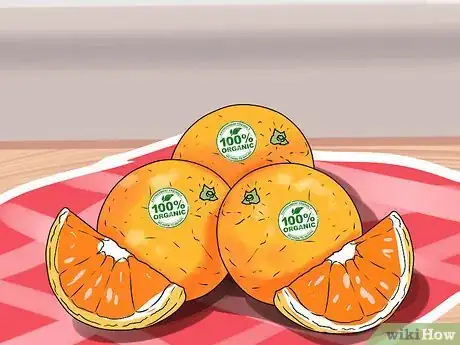
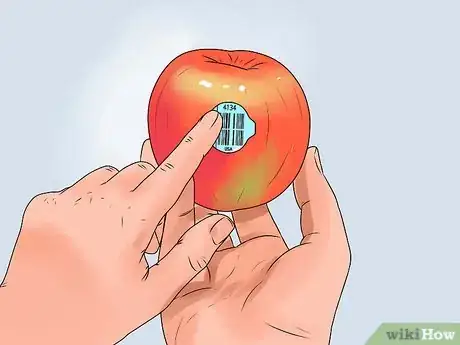
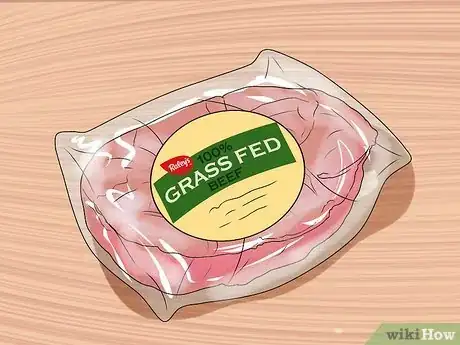
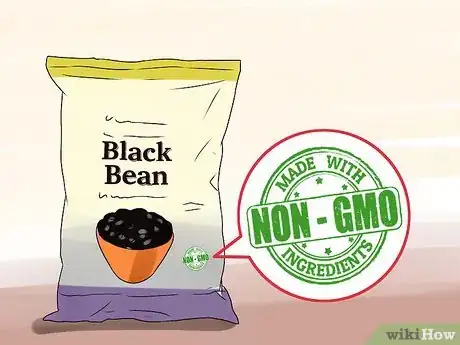
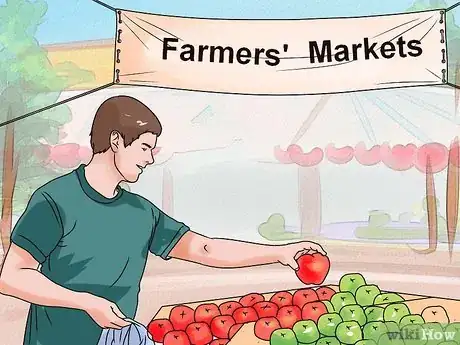
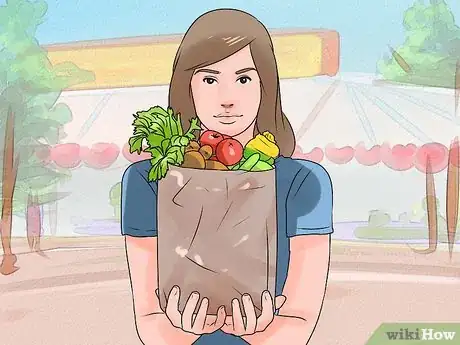


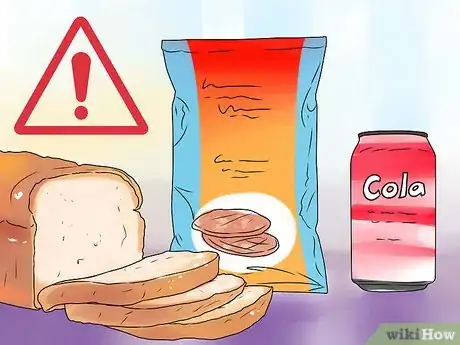
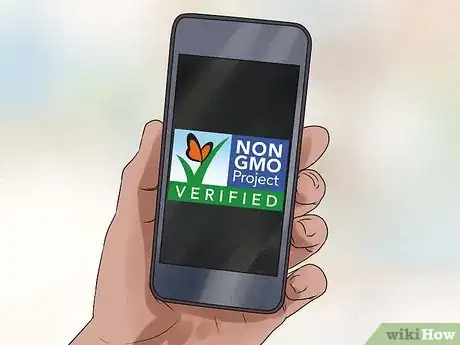


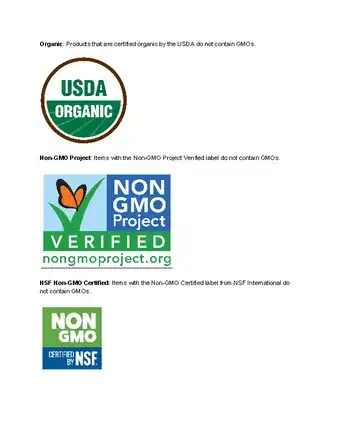


-Step-3-Version-3.webp)






















-Step-3-Version-3.webp)


































